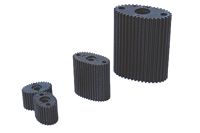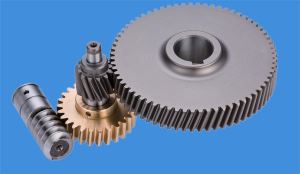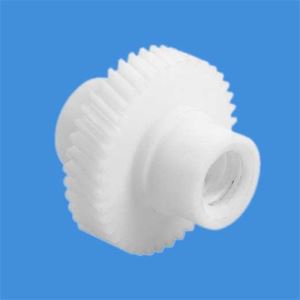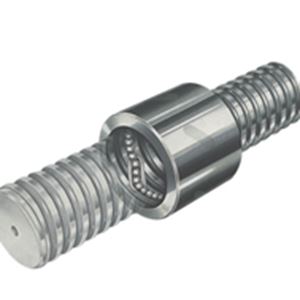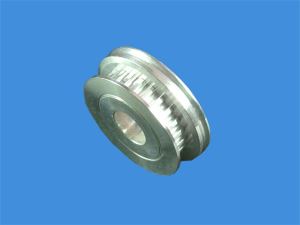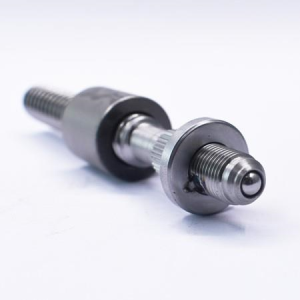Product Categories
1. The forming method for teeth cutting USES the forming cutter or the forming grinding wheel with the same profile as the tooth groove of the gear wheel being cut, and the workpiece's teeth are cut out one by one by the dividing mechanism. The commonly used ones are milling teeth, pulling teeth and grinding teeth.
Milling teeth with disc gear milling cutter in the milling machine or the use of finger gear milling cutter (see gear machining tool) in a gear hobbing machine with a single tooth indexing mechanism processing.
The former is suitable for machining medium and small modulus gear by means of indexing head.The latter is suitable for machining gears with modulus greater than 10 mm.Because of the different modulus or tooth number of gear tooth shape is different, in theory, a forming gear milling cutter is only suitable for processing a kind of modulus and tooth number of gear.But in the actual production, in order to reduce the number of milling cutter, usually with a gear milling cutter machining the same modulus and the number of teeth in a range (such as the number of teeth is 12 ~ 13, 14 ~ 16, 17 ~ 20,......, 55 ~ 134, etc.) in the gear, so the milling tooth tooth shape often has a large error.Gear milling method can be used to process straight teeth, helical teeth, herringbone teeth cylindrical gear, also can be processed rack and sector gear.Milling tooth productivity is low, the processing accuracy is also lower, usually for 9 (according to jb179-83, the same as below), but can be carried out in ten thousand milling machine, tool manufacturing is easier, so milling tooth is still used.
Main technical requirements for cylindrical gears
The manufacturing accuracy of gear has a great impact on the machine's working performance, bearing capacity, noise and service life, so its manufacturing must meet the requirements of gear transmission.
2. The accuracy of the transmission movement requires that the rotation Angle error of the gear in a rotation is limited within a certain range, so that the gear transmission ratio changes little to ensure the accuracy of the transmission movement.
3. The stationariness of transmission movement requires that the angular error within the range of one tooth of the gear is limited to a certain range, so that the instantaneous transmission ratio of the gear pair changes little, so as to ensure the smooth transmission of the gear, no impact, and low vibration and noise.
4. The uniformity of load distribution requires good contact between working tooth surfaces in the transmission to ensure the uniform load distribution.Apricot will lead to tooth surface stress concentration, premature wear and reduce the service life.
5. The rationality of tooth side gap requires that certain side gap should be left on the non-working tooth surface of meshing gear teeth, so as to store lubricating oil and compensate for elastic deformation and thermal deformation as well as manufacturing and installation errors of gear.
6. Main technical requirements of tooth blank: the inner hole and end face of tooth blank are often used as the reference for gear processing, inspection and installation.Therefore, there are corresponding requirements for the diameter tolerance of the reference hole and the runout of the reference end face of the tooth blank.
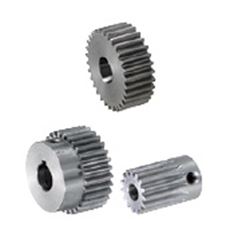
Related News
- What Is The Installation Method Of ...
- The Geometric Shape And Design Prin...
- Bevel Gear Processing
- Bevel Gear
- A Brief Introduction To Rack
- What Are The Advantages And Disadva...
- Professional Production Of Various ...
- Factors Affecting Gear Rotation
- The Market Of Domestic Gear Grindin...
- Processing Technology Analysis Of Rack
- The Development Pattern Of Gear
- History Of Transmission Gear Develo...
- Gear Structure
- Gear Material Selection
- Gear Processing Methods Have What G...
- Precision Gear Tooth Grinding Process
- Why There Is Deformation 1-12 In Ge...
- The Basics Of Rack And Pinion
- Introduction Of Precision Rack Quen...
- What Are The Methods Of Gear Machining


